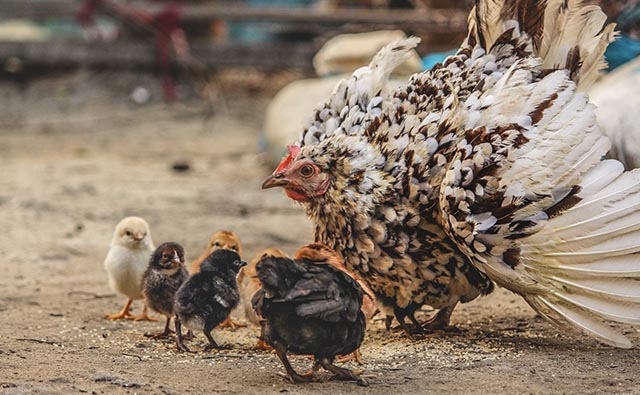Industry News, Agriculture & Feed, Feed
Bitter tastants in feed ingredients

Industry News, Agriculture & Feed, Feed

Potatoes, lupins, peanuts – but also corn, wheat or soy – they all have one thing in common: they contain antinutritional factors (ANFs). Apart from having an impact on palatability, they can also affect pig health through more complex mechanisms.
Plant materials such as soy, corn, and wheat, are the main components of pig feeds. This is due to their relatively low cost and high nutritional value, containing amino acids and vitamins, among others. However, plant-based ingredients can also contain anti-nutritional factors (ANF), which are naturally produced to protect plants against predators in their natural environment. These ANFs can have detrimental effects on animal welfare, health, and growth by impairing feed intake, affecting the utilisation of other feed components, or causing discomfort and stress.
The reduction in feed intake associated with non-toxic levels of ANFs is commonly driven by a low feed palatability due to bitter tastants (Table 1). Besides affecting feed palatability and acceptability, ANFs can also affect pig’s health through more complex mechanisms, such as inactivation of digestive enzymes, reduction of the absorption of particular nutrients, vitamins, minerals, and trace elements, or by interfering with the general metabolism, hormonal regulation, or immune system of animals.
ANFs are characterised as thermosensitive or thermostable with regards to their heat stability. Thermosensitive ANFs, such as protease inhibitors present in soybean, can be removed by heat. Although this is a simple and effective procedure, it can lead to over-heating of plant ingredients, thereby reducing their nutritional value and affecting feed palatability. Thermostable ANFs, such as the toxic glycoalkaloids present in potatoes and lupins, can be removed by more complex technologies, which concomitantly increases feed costs. On the other hand, some ANFs might also have positive physiological effects on pigs, mainly due to their antibacterial or antioxidant action, and hence their removal might not always be desirable. However, the effects of different feed processing technologies on the nutritional value of feed ingredients are not fully understood. It is, therefore, important to find alternative options to minimise the negative consequences of ANFs in pig feeds.
Different criteria are used in the selection of feed ingredients, including their cost, nutritional value, availability, and sustainability parameters. Regarding cost, a common example is the inclusion of by-product ingredients, such as distillers dried grains with solubles (DDGS) and high-protein distillers dried grains (HP-DDG), which may improve the profitability of pig production by replacing high-cost ingredients. However, this often results in palatability problems, as certain sources that are overheated in the drying process become aversive and can compromise intake in pigs.
In terms of nutritive value relative to cost, soy is considered the golden standard of protein source for pig feeds. Soybean protein is rich in lysine, threonine, and tryptophan, which are amino acids found in limited amounts in corn, wheat, sorghum, and barley. However, the main soy producers are located in the American continent and there is an increasing trend driven by European governments, retailers, and consumers, for protein self-sufficiency in Europe. In total, 11 European countries have already signed the European Soy declaration in support of a reduction in soy imports. There is also a greater need for local non-GMO protein sources that do not lead to tropical deforestation and that allow the recycling of excess nutrients by using manure as fertiliser for crop production.
That said, this new trend for self-sufficient and sustainable protein sources also comes with its challenges:
| Challenges |
| 1. Growth efficiency: Soy has a lower growth efficiency in European climates. As a consequence, European soy is significantly more expensive than world market soy. |
| 2. Local species: Other European protein sources like rapeseed, sunflower, potatoes, and lupins can be an alternative to soy. However, such protein sources usually have higher content of ANFs, particularly bitter tastants, that affect feed palatability. For instance, low-glucosinolate rapeseed and sunflower seed meals show low preference values and may decrease voluntary feed intake in pigs. Piglets are particularly susceptible to feed compositions including potato protein sources and their preference for this protein source decreases with its inclusion level (Figure 1). As previously mentioned, ANFs can be removed by combinations of different techniques, but this is accompanied by notably higher production costs. |
| 3. Storage: Going local also means that fresh produce will not be available all year round. Storing raw materials is expensive and has been shown to reduce palatability due to natural chemical reactions that occur during the storage period. The extent of reduced palatability depends on the protein source and level of inclusion. |
| 4. Adaptability to new raw materials: Every time feed composition changes its palatability is also affected, and pigs need to adapt to the new diet composition. This takes time and usually involves a high risk of weight loss if the new feed ingredients have bitter tasting ANFs, which is particularly critical during sensitive growth stages, such as immediately after weaning. |
Click to Allaboutfeed.net to learn the figure picture.
Currently, there are drastic changes occurring in global markets regarding feed ingredients, in order to produce alternative and self-sufficient protein sources. The shift from all year round available and well-received protein sources like soy to more bitter, less palatable, and seasonal sources like potatoes or lupins, could lead to additional problems, such as unavailability of raw materials and unwanted increases in cost. These new trends will lead to more frequent changes in feed composition that will require longer adaptation times, with negative consequences on pig performance. In conclusion, understanding the properties of raw materials and developing new, universal, and cost-efficient ways to minimise the negative impacts of the presence of bitter compounds is essential for a healthy and economically viable pig husbandry.